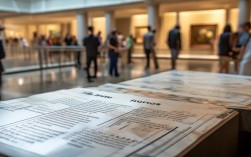在雅思口语考试中,"modern place"是一个常见的高频话题,它不仅考察考生对地点的描述能力,还涉及对现代生活方式、科技发展、文化变迁等深层次话题的探讨,无论是描述一座现代化的城市、科技感十足的图书馆,还是设计新颖的咖啡馆,考生都需要通过清晰的逻辑、生动的细节和丰富的词汇,展现自己对"modern place"的理解,本文将从核心要素、描述框架、实用词汇和范例分析四个方面,系统解析如何高效应对这一话题,帮助考生在口语考试中脱颖而出。

描述"modern place"的核心要素
一个成功的"modern place"描述,需围绕"现代性"展开,突出其区别于传统场所的独特特征,核心要素可归纳为以下四点:
-
建筑与设计风格
现代场所通常强调简洁线条、开放空间和功能性设计,例如大面积的玻璃幕墙、极简主义装饰、智能照明系统等,考生可结合具体案例,如描述上海中心大厦的流线型外观,或东京teamLab无界美术馆的数字化互动装置,展现对现代美学的理解。 -
科技与智能化应用
科技是"现代性"的核心体现,从智能门禁、语音导览到全息投影技术,现代场所通过科技提升用户体验,新加坡滨海湾金沙酒店的"天际泳池"采用玻璃底设计,结合LED灯光系统,营造出未来感十足的体验。 -
功能与社交属性
现代场所往往融合多重功能,打破传统单一空间的局限,联合办公空间(如WeWork)不仅提供办公设备,还设置咖啡区、休闲区和会议室,满足年轻人协作与社交的需求,考生可强调其"复合型"特点,体现对现代生活方式的观察。 -
文化与时代精神
现代场所常反映特定时代的文化价值观,如环保理念、包容性设计等,哥本哈根的"超级线性公园"通过废弃铁路改造,将工业遗迹与绿色空间结合,既保留了历史记忆,又践行了可持续发展理念。
结构化描述框架
为使表达逻辑清晰,建议采用"总-分-总"结构,结合"感官描述+功能分析+个人感受"的层次展开:
| 结构模块 | 内容要点 | 示例 |
|---|---|---|
| 引入(总) | 点明地点名称、类型及核心现代特征 | "I'd like to talk about the Shanghai Astronomy Museum, a cutting-edge complex blending science and futuristic design." |
| 细节展开(分) | 外观与设计 科技应用 功能与体验 |
"Its curved, organic structure resembles a celestial orbit, with solar panels integrated into the facade... Inside, AR guides simulate spacewalks, allowing visitors to interact with planets..." |
| 总) | 个人感受及对现代意义的思考 | "This place isn't just a museum; it's a bridge between curiosity and innovation, embodying how modern spaces inspire wonder." |
实用词汇与表达
积累与"modern place"相关的词汇,能显著提升语言的地道性和准确性:
- 设计类:minimalist(极简主义的)、sleek(线条流畅的)、futuristic(未来派的)、open-plan(开放式的)
- 科技类:smart system(智能系统)、interactive display(互动展示)、AI-powered(人工智能驱动的)、sustainable tech(可持续技术)
- 氛围类:vibrant(充满活力的)、sleek(时尚的)、immersive(沉浸式的)、collaborative(协作式的)
- 功能类:multi-functional(多功能的)、hub(中心)、amenities(配套设施)、co-working space(联合办公空间)
范例分析:描述"Modern Library"
引入:
"The City Central Library in my hometown is a perfect example of a modern library, redefining the traditional concept of a 'quiet reading space' with technology and inclusivity."
细节展开:
Architecturally, it features a glass dome that floods the interior with natural light, creating a bright, airy atmosphere. Unlike old libraries, its design emphasizes openness—there are no confined cubicles, but instead flexible seating areas with sofas, standing desks, and even soundproof pods for group discussions. Technologically, it’s equipped with self-checkout kiosks, an app that allows users to reserve books or study rooms remotely, and a digital reading zone with e-readers and VR headsets for immersive learning. What impresses me most is its integration of community functions: the ground floor houses a café and a small exhibition hall, hosting poetry readings and tech workshops regularly.
"This library isn’t just about books; it’s a community hub where knowledge meets innovation. It shows how modern spaces can adapt to people’s needs, making learning both accessible and engaging."
FAQs
如何避免在描述"modern place"时内容空洞?
答:避免泛泛而谈"it's modern and beautiful",而是通过具体细节支撑观点,与其说"the museum is high-tech",不如描述"visitors can use tablets to scan exhibits and watch 3D documentaries on ancient civilizations",结合数据(如"the building uses 30% less energy thanks to smart sensors")或个人经历("I once attended a coding workshop there where we programmed robots"),能让描述更真实可信。
如果不熟悉某个具体的"modern place",如何灵活应对?
答:可基于常识"创造"一个合理场景,重点突出"现代性"而非真实性。"Imagine a futuristic library with a robot librarian that recommends books based on your reading history, and walls that display digital art from local artists." 使用"Imagine""Suppose"等词表明这是假设场景,同时确保描述符合逻辑(如机器人需有"AI algorithm"支持),展现语言组织能力而非知识储备。











